Naandi
The Sanskrit word Naandi means beginning. So with Naandi begins the pre rituals to Munji ceremony to get the blessings of the ancestors. Naandi is performed on the previous day or on the same day prior to Munji ceremony.
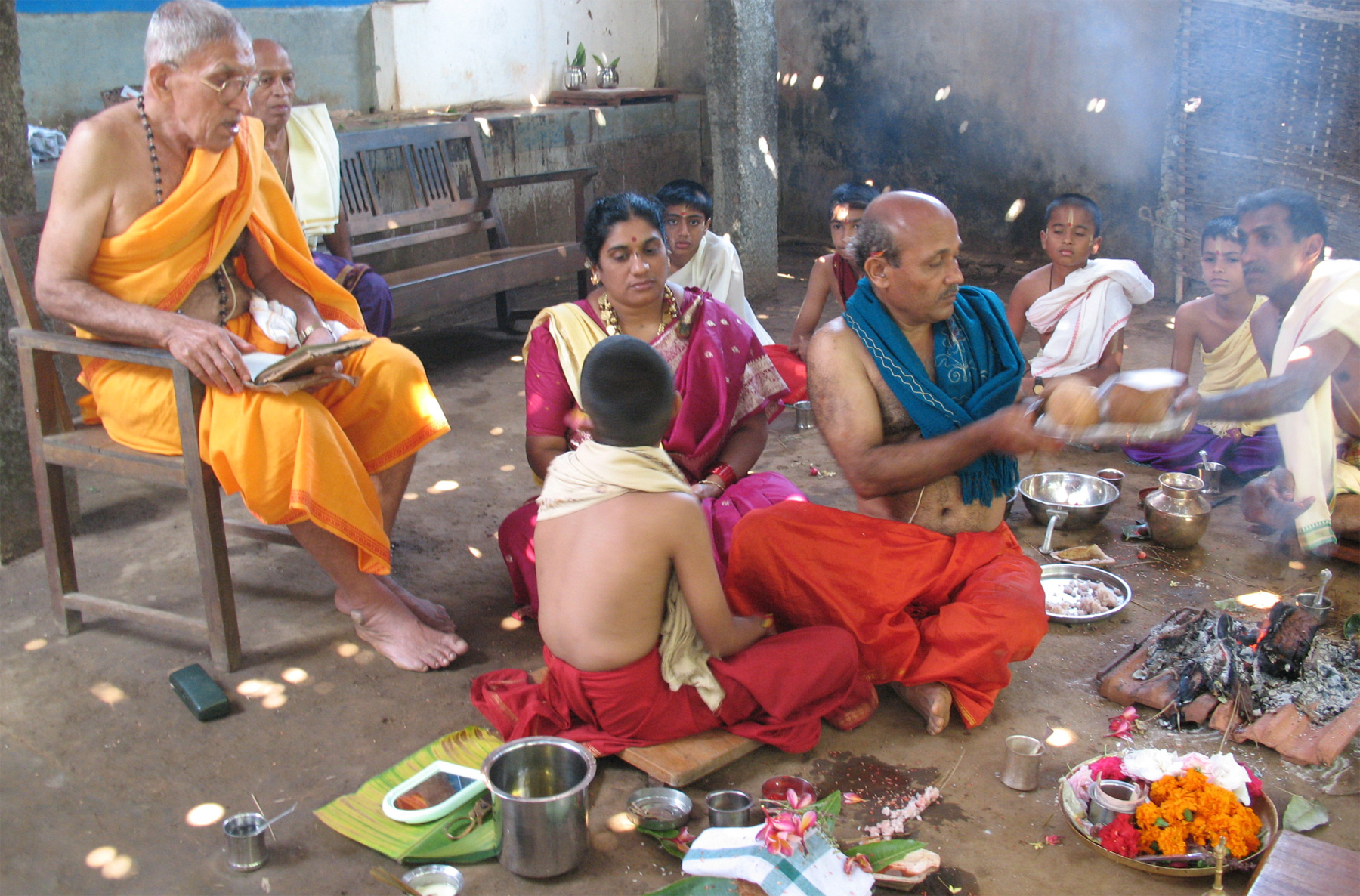
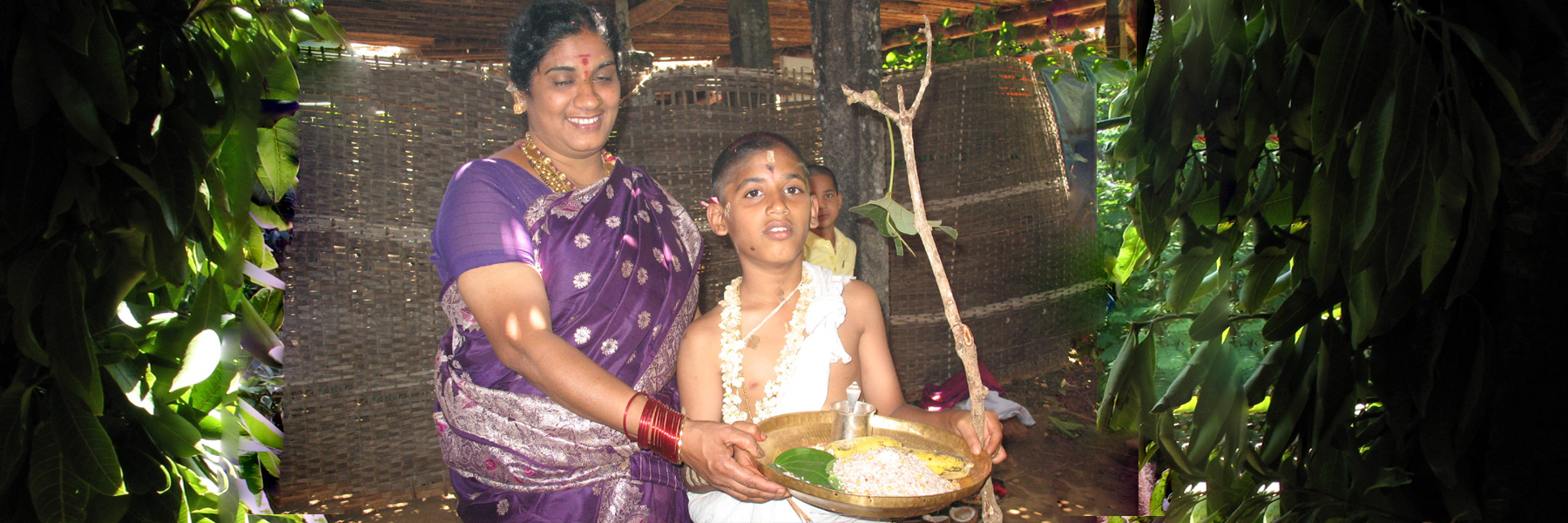
Munji is also known as Upanayana, Brahmopadesha, and every Havyaka male child goes through the Munji ritual. The Yajnopavita (Janivara / sacred thread) is worn as a symbol of having gone through this ceremony. The one who wears Yajnopavita should be pure in thought, word, and action. The Yajnopavita signifies that the 3 activities of thought, speech, and action should be one, which is a constant reminder to be truthful and straightforward.
After Munji, the Vatu (boy) is ready to lead a life of Brahmacharya (disciplined and self-controlled living) to study the Vedas, participate in Vedic functions, perform Sandhyavandana, and other rituals. In ancient times the Vatu used to leave home to the Gurukul (kind of residential school) after this ceremony. Today the Munji or Upanayana does not mean leaving home for the ascetic life of a student. However, it does signify a budding seriousness about learning the sacred knowledge of the tradition and appropriating the tradition of one's ancestors as one's own. Munji is one of our samsakaras that shape the whole course of life for a boy.
The Sanskrit word Naandi means beginning. So with Naandi begins the pre rituals to Munji ceremony to get the blessings of the ancestors. Naandi is performed on the previous day or on the same day prior to Munji ceremony.

After a ritual bath, the Vatu and his parents worship Ganesha and other gods. Worship of Agni, Panchabhootas (the five elements of nature) and Vishnu are done. Ghee and navadhanya (nine types of grains) get offered during Homa ritual amidst chanting of Vedic hymns.
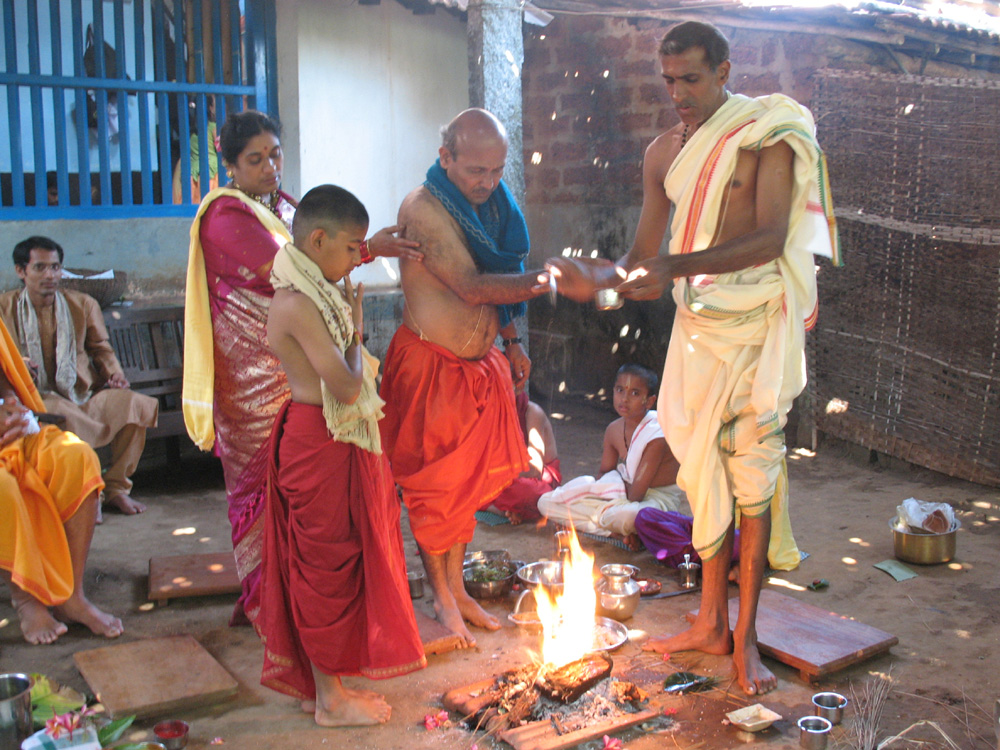
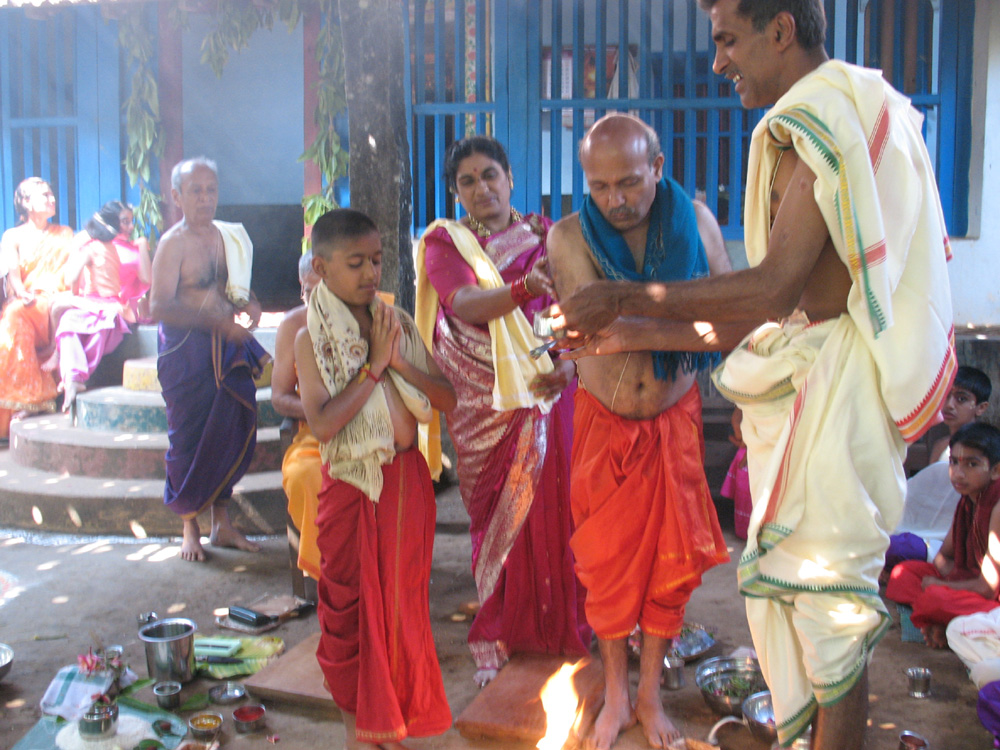
The Vatu gets his head shaven, leaving a shikha (a tuft of hair) at the appropriate place. It is a ritual regarded as the prerequisite for a child to receive his education. It signifies the simplicity and purity of the boy who has decided to obtain the education with utmost concentration leaving all other distractions of life behind. The shikha signifies his determination. Today, the ritual is marked by cutting a piece of hair. After this ritual the Vatu takes bath and gets ready for the next ritual wearing a new set of cloth.
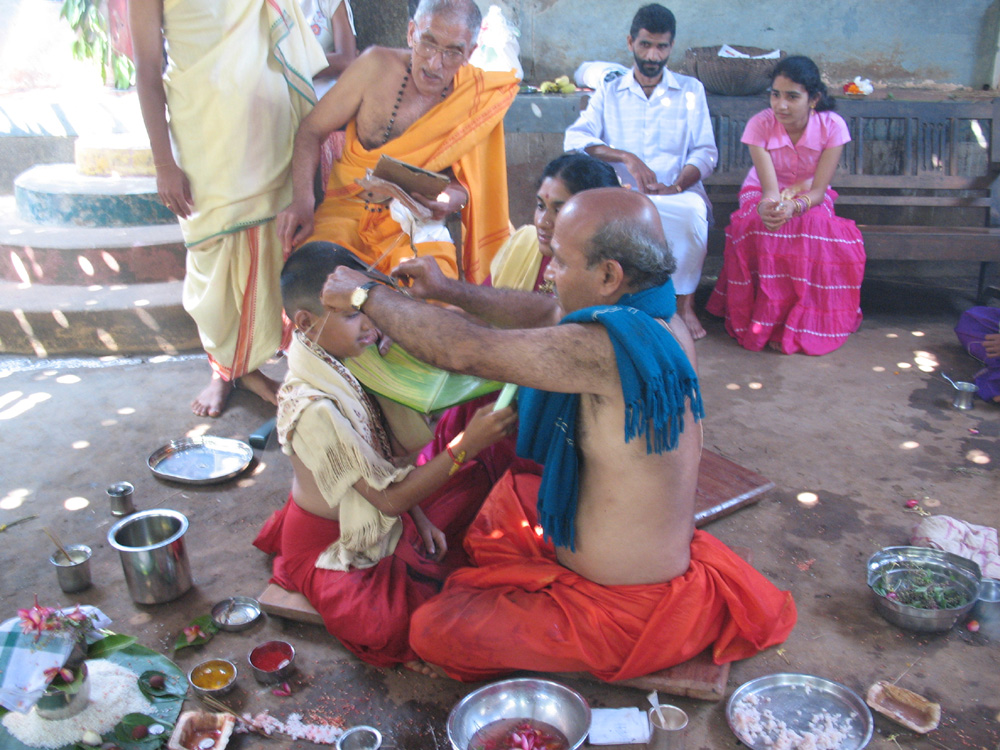
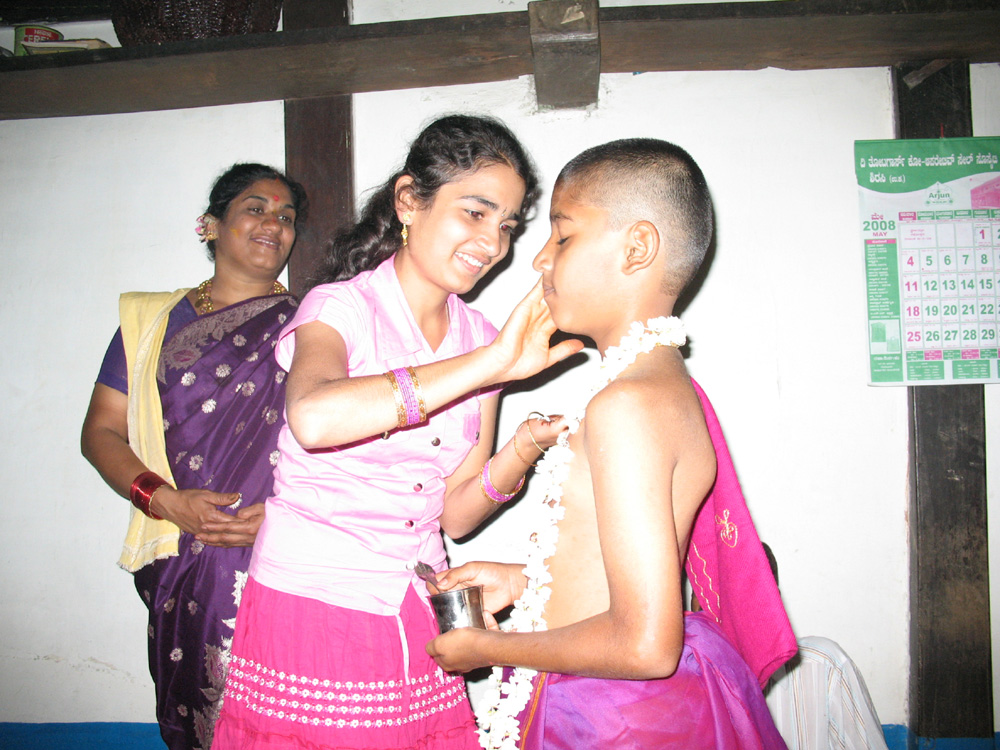
The Yajnopavita is placed in the pooja plate and pooja is performed. An oath is taken to treat the Yajnopavita with great respect. All the elders bless the Vatu by touching the Yajnopavita that is placed in the pooja plate. Thereafter, the Yajnopavita is worn to the Vatu by the father keeping one end on his left shoulder and the other hanging across the chest towards right side from under the right shoulder amidst chanting of mantras. Everyone present at the ceremony drop akshata (rice mixed with kumkum) over Vatu.
The Yajnopavita comprises of three strands of strings representing purity and control of body in mind, speech, and action. The three strands also stands for the three Vedas thereby reminding him that he has to study them and incorporate their message in his life. The Yajnopavita identifies the wearer as dvija or twice born - a spiritual rebirth.
The Gayatri mantra is the most powerful and the mother of all Vedic mantras. The Gayatri mantra first appeared in the oldest Vedic literature Rig Veda mandala 3 dedicated to deity Savitr. Savitr means god the creator. He is identified with the sun. He is the supreme lord residing in the heat of the sun. Hence the real name of the mantra is Savitri mantra. Since it was revealed to the sage Vishwamitra, for the first time in the Vedic mantra known as the Gayatri, the mantra itself has been identified with it and has popularly come to be known as the Gayatri mantra.
The father is considered the spiritual guru (teacher) who initiates the Vatu into Gayatri mantra. To signify the sanctity of the ritual, it is performed under the cover of a sacred cloth. The father prays for the strength and long life for the Vatu.
Aarati is performed to the Vatu and his parents. Then the Vatu and his parents perform pooja and Homa. Then the Vatu seeks blessings from elders present in the ceremony.
Bhiksha was practice in ancient gurukulas (kind of residential school), where the boy led his life by taking alms. So the Munji ritual is marked by symbolic begging.
During this ritual the Vatu wears set of white cloth and a girdle made of Munja grass (Tripidium bengalense) round the waist, and holds the Palasha (Butea Frondoza) branch in hand.
The Vatu begs for Bhiksha by saying Bhavati Bhikshamdehi or Bhavan Bhikshamdadatu from his mother and other relatives present in the ceremony.
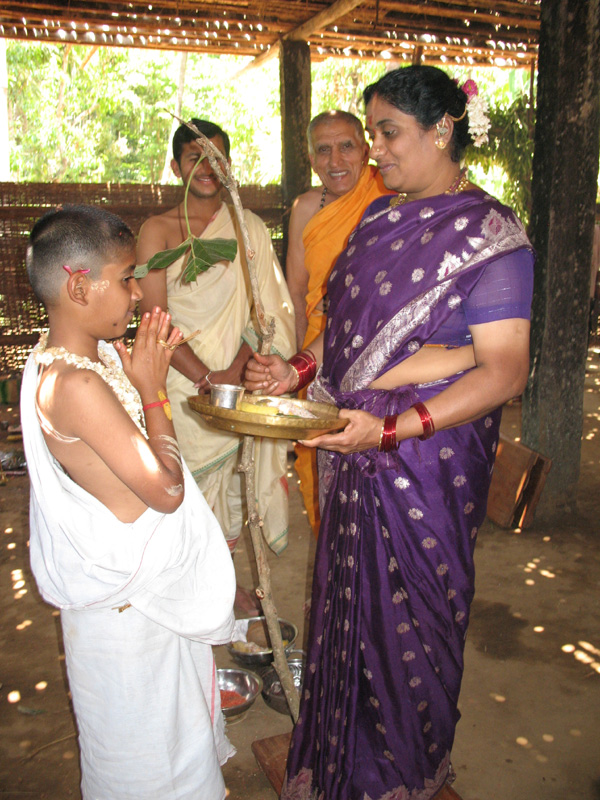
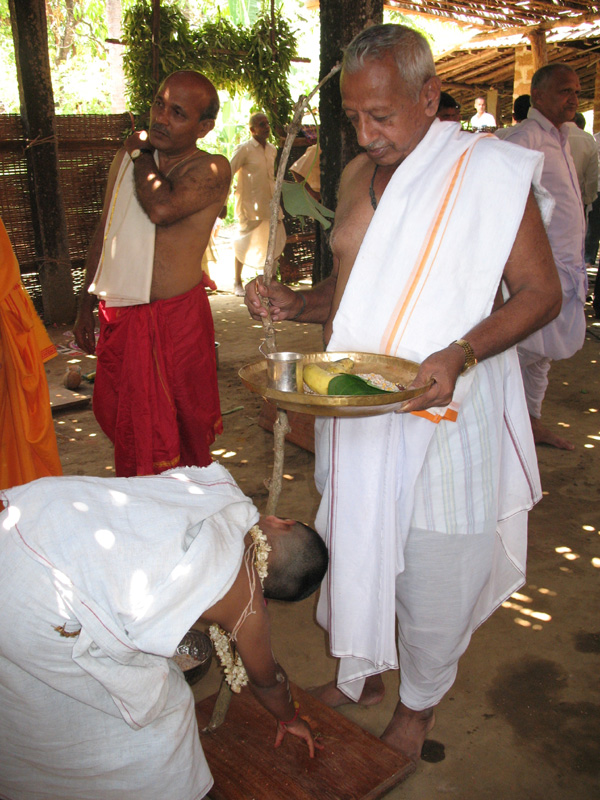

The traditional Havyaka festive food is prepared and served to guests. The Vatu sits with purohit / acharya (teacher) during lunch. And, the teacher teaches the Vatu all the rituals that have to done before and after taking lunch.
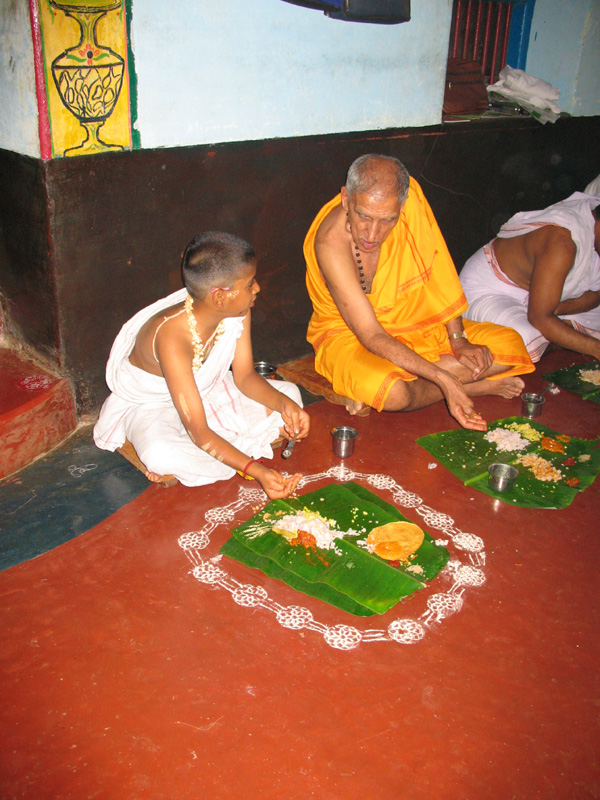
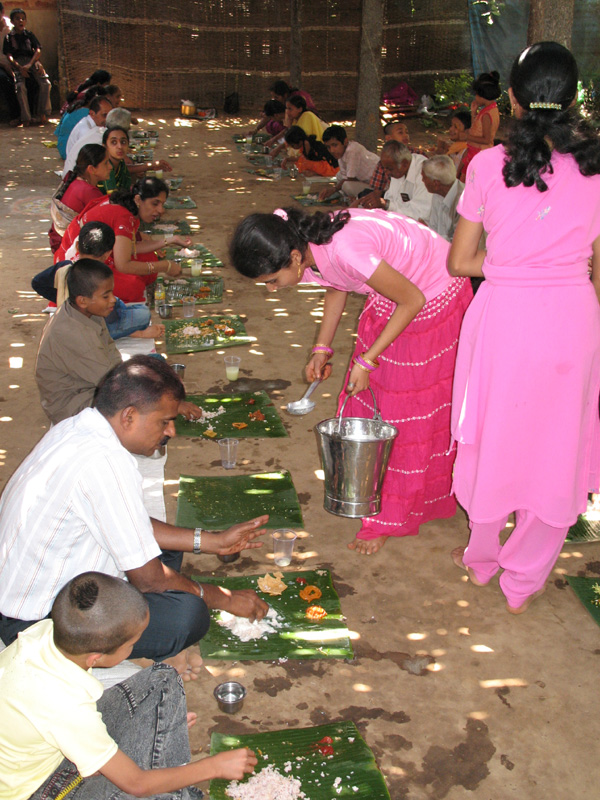
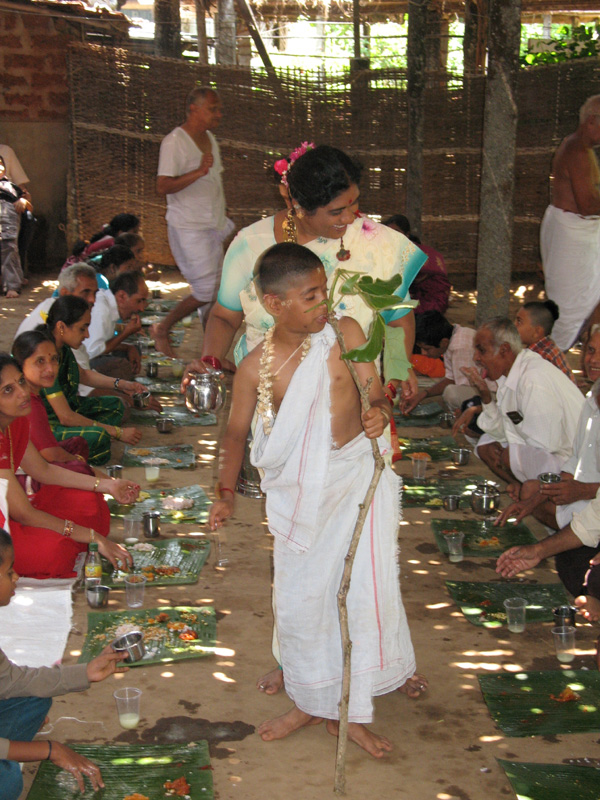
The Vatu seeks blessings from God, Purohit / Aacharya, and his elders. Mantrakshate (Mantra + Akshate, i.e. sacred rice grains mixed with kumkum), a kind of Prasad, is distributed to all by the eldest of the family. Aarati is performed to the Vatu and his parents. The guests bless the Vatu by showering with gifts.